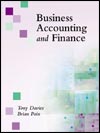 |
1 |  | 
A standard cost is a basis for comparison of actual costs against planned costs. The types of standard that may be most effective for control purposes
|
|  | A) | are expected to be achieved under any circumstances
|
|  | B) | contain reasonable allowances for operational inefficiencies
|
|  | C) | contain no allowances for normal loss, waste and machine downtime
|
|  | D) | remain unchanged for successive accounting periods
|
 |
 |
2 |  | 
Flexed budgets are used to show |
|  | A) | the impact of the removal of 'padding' from operational budgets |
|  | B) | perfect performance under perfect conditions |
|  | C) | revised expected costs and revenues as a result of changes in activity levels |
|  | D) | changes to budget targets following poor performance |
 |
 |
3 |  | 
Variance analysis is used to compare planned and actual performance. Which of the following is not a reason for the occurrence of variances?
|
|  | A) | operations being out of control
|
|  | B) | the use of standards that are out of date
|
|  | C) | actual performance being the same as standard performance
|
|  | D) | measurement errors
|
 |
 |
4 |  | 
Direct materials variances may be analysed into
|
|  | A) | usage and efficiency variances
|
|  | B) | price and usage variances
|
|  | C) | efficiency and price variances
|
|  | D) | price and productivity variances
|
 |
 |
5 |  | 
Direct labour variances may be analysed into
|
|  | A) | efficiency and rate variances
|
|  | B) | usage and rate variances
|
|  | C) | usage and price variances
|
|  | D) | efficiency and price variances
|
 |
 |
6 |  | 
Which of the following may be the likely reason for an adverse materials variance?
|
|  | A) | employment of higher skilled operators
|
|  | B) | price reductions and reduced wastage
|
|  | C) | overestimated materials costs used in the standards
|
|  | D) | increased waste and price increases
|
 |
 |
7 |  | 
Which of the following may be the likely reason for a favourable direct labour rate variance?
|
|  | A) | overestimated standard labour time per unit
|
|  | B) | overestimated standard labour cost pending the result of wage negotiations
|
|  | C) | changes to the product specification which reduced manufacturing time
|
|  | D) | reduction in direct labour costs due to a strike in the factory
|
 |
 |
8 |  | 
Which of the following is not likely to be the reason for a favourable materials usage variance?
|
|  | A) | employment of lower skilled operators
|
|  | B) | supplier invoice error
|
|  | C) | improved stock control
|
|  | D) | use of higher quality materials
|
 |
 |
9 |  | 
Questions 9 and 10 refer to the following diagram:  <a onClick="window.open('/olcweb/cgi/pluginpop.cgi?it=gif::ch12a::/sites/dl/free/0077098250/66362/ch12a.gif','popWin', 'width=506,height=132,resizable,scrollbars');" href="#"><img valign="absmiddle" height="16" width="16" border="0" src="/olcweb/styles/shared/linkicons/image.gif">ch12a (50.0K)</a>ch12a <a onClick="window.open('/olcweb/cgi/pluginpop.cgi?it=gif::ch12a::/sites/dl/free/0077098250/66362/ch12a.gif','popWin', 'width=506,height=132,resizable,scrollbars');" href="#"><img valign="absmiddle" height="16" width="16" border="0" src="/olcweb/styles/shared/linkicons/image.gif">ch12a (50.0K)</a>ch12a
The materials usage variance (in pounds) is |
|  | A) | 4,000 A |
|  | B) | 4,000 F |
|  | C) | 5,000 F |
|  | D) | 5,000 A |
 |
 |
10 |  | 
The materials price variance (in pounds) is |
|  | A) | 2,000 A |
|  | B) | 3,000 A |
|  | C) | 3,000 F |
|  | D) | 2,000 F |
 |




 2003 A McGraw-Hill Online Learning Centre
2003 A McGraw-Hill Online Learning Centre